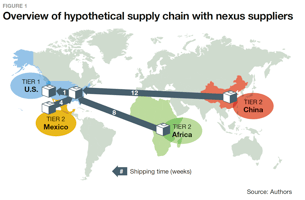The COVID-19 pandemic has pushed risk to the top of virtually every corporate agenda, according to...
Supply Chain Risk and Resilience: State of the State
Analyst Insight: The COVID-19 pandemic has pushed awareness of the need for better risk management to the top of virtually every corporate agenda.
According to a 2021 study by McKinsey, for the first time in about 10 years, 95% of executives in a recent survey said they had formal supply-chain risk-management processes in place. A further 59% of companies said they had adopted new risk management practices over the past 12 months. A small minority (4%) had set up a new risk-management function from scratch, but most respondents said they had strengthened existing capabilities.
This is very encouraging news. In the last three years, many more companies have begun exercising best practices for ensuring effective supply chain resilience and risk management. Gartner has identified three relevant key issues in this area. The first is digital transformation of the supply chain. The second is talent, or what it calls “The Future of Work.” And the third is risk management embedded throughout the enterprise.
In a later report, Gartner stated that more than 65% of executives planned to be “more proactive and better prepared for disruptions. This approach will be integral to how we operate in 2022 and beyond,” the executives said.
Because COVID-19 has had such an uneven and devastating effect on almost every industry, the watchword for all has been resilience. A resilient enterprise has the capacity to overcome disruptions and continually transform itself to meet the changing needs and expectations of its customers, shareholders and other stakeholders.
That’s a very tall order. However, in the last 12 months there’s been an active dialogue among companies seeking new strategies for the creation of super-efficient supply chains — not just those that are merely effective or resilient. This has resulted in wide-ranging discussions covering near-shoring, onshoring, less reliance on lean and just-in-time inventory models, and a stronger commitment to identifying risks and building out supply chains that can weather many types of risk events. It’s all part of an effort to reinforce resilience throughout the industrial supply chain — including acts by Congress to allocate funds for fostering more secure and resilient supply chains across multiple industries.
Outlook: Expect to see the emergence of more cloud-based technology solutions, drawing on predictive analytics and machine language algorithms to become prescriptive, and even cognitive, in identifying and responding to risk. They’ll end up supporting additional pillars of the entire supply chain, from suppliers’ suppliers to customers’ customers, fulfilling the vision of end-to-end supply chain risk management. Many more companies will be embracing best practices for supply chain risk and resilience, and embedding them into their daily supply chain decisions.
SUPPLY CHAIN SECURITY & RISK MANAGEMENT
SupplyChainBrain | Gregory L. Schlegel, Founder, Supply Chain Risk Management Consortium

